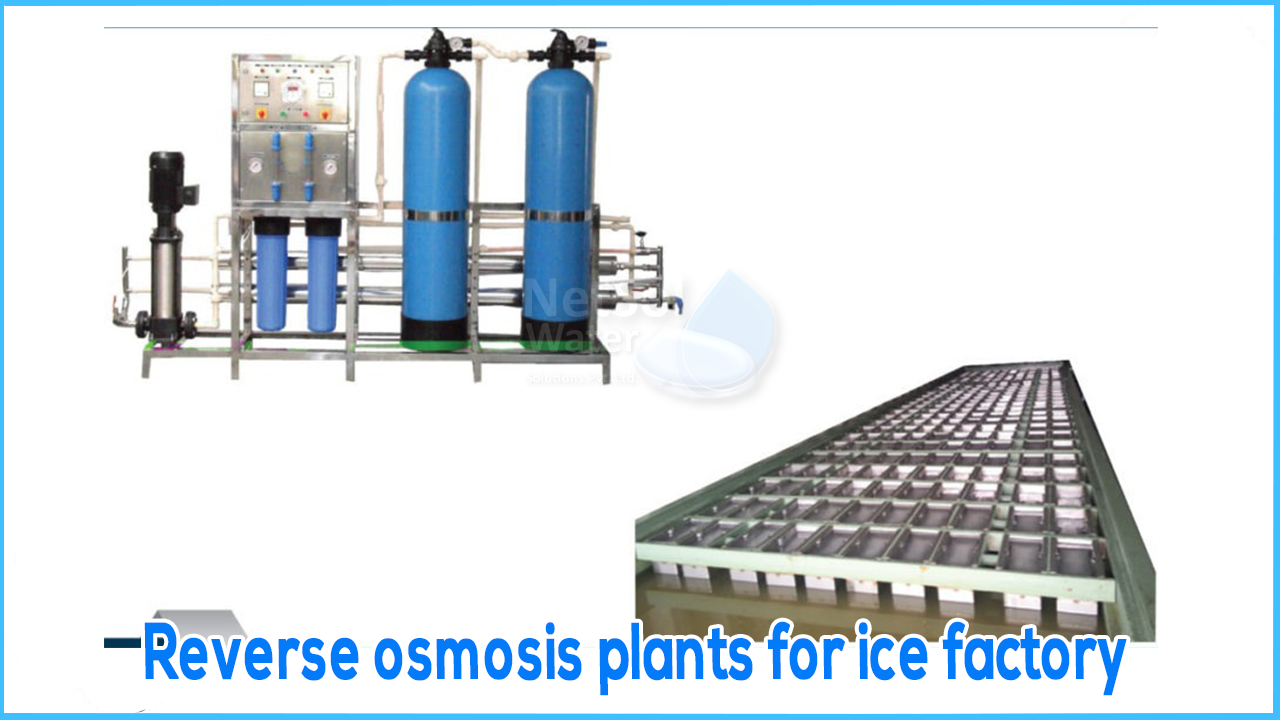Reverse osmosis plants for ice factory
In an ice manufacturing or an ice factory, a reverse osmosis plant is required. When compared to tap water ice, RO water produces crystal ice that lasts longer and is more durable. Crystal ice is more expensive than regular ice on the market. As a result, the RO Plant improves the quality of your ice while also increasing its profitability.
Whether or not an ice plant is necessary inside the port area is highly dependent on local conditions. Other ice factories may be a reliable source of adequate ice, and even after factoring in additional transportation expenses and the manufacturer's profit, they may be able to deliver ice for less than the user can make it. A large installation has numerous cost advantages over a smallunit, therefore it is logical to expect it to generate less expensive ice. Other variables, such as financial independence, may be able to compensate for a financial disadvantage.
Some RO Plants are specifically built for ice factories, taking into account their demands and requirements. RO Plants are widely acknowledged and certified by food authorities in all provinces.
IN THE PROCESS OF MAKING ICE, WATER QUALITY IS VERY IMPORTANT-
An icemaker who does not have a thorough understanding of their water make-up, ice paint materials, and professional application abilities for each of these items is open to criticism. Users demand a high-quality ice product, therefore an icemaker should gather as much information as possible about the water and paint being used, and stick to the tried-and-true application processes.
The three most important ingredients in Ice-Making-
1.Water
When a sheet of water freezes, it should be firm, allowing water applications to freeze fast and resulting in little snow accumulation even in the most extreme conditions. Dissolved minerals, biological debris, and the ultimate enemy of ice, "air," can all be found in both groundwater and municipally treated water. Depending on the water supply, ice quality will varies. When "hard" or "soft" water is used, two completely different types of ice are created, each of which performs differently under all situations. The icemaker will be better prepared to address user issues about ice consistency if they understand the qualities of water.
2.Water Treatment Systems
A pH level of less than 7.0 is highly recommended for a good ice surface. Water treatment procedures are widely standardized, and each has its own set of benefits when applied correctly for the intended application. Prior to making any purchases, it is highly suggested that competent experienced providers be consulted. Purchase decisions should be based on industry-proven testimonials, taking into account chemical prices, annual maintenance fees, and the return on investment calculated through energy conservation calculations. The best approach to any capital investment is to be an informed consumer.
3.Quality of Water
Water quality has an impact on energy usage and ice quality. Minerals, organic materials, and dissolved air in the water can impact both the freezing temperature and the ice thickness required for good ice conditions. When appropriately applied, these treatments lessen or eliminate the impacts of pollutants while also improving ice conditions.
ICE FACTORY RO PLANT ADVANTAGES
- 1. Produce crystal ice that is stronger and lasts longer (melts later) than tap water.
- 2. Reduce energy costs since RO water ice freezes faster than tap water ice.
- 3. The market price of RO water ice is higher than the market price of tap water ice, earnings are increased.
- 4. The Food Authority has approved and recommended this product.




